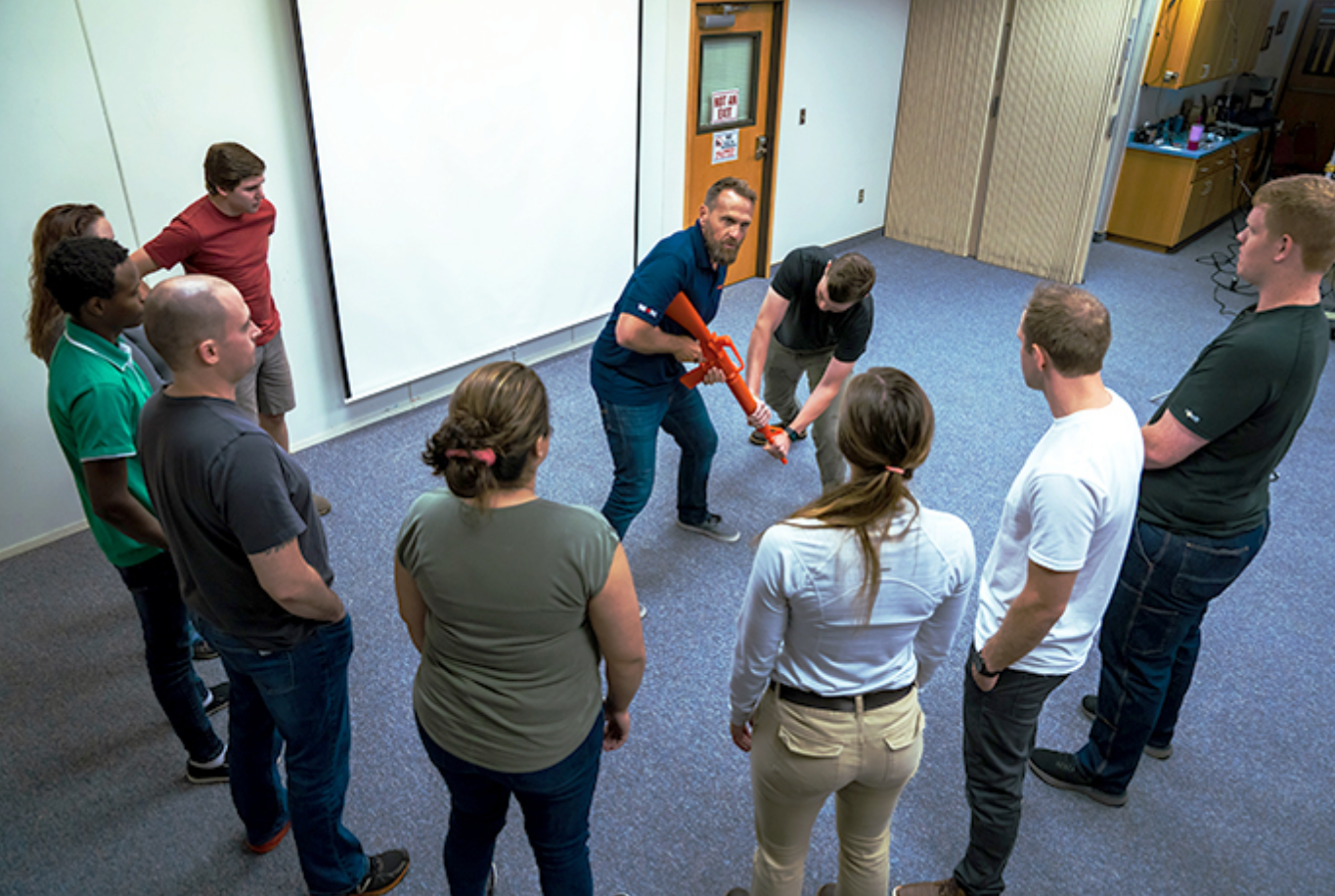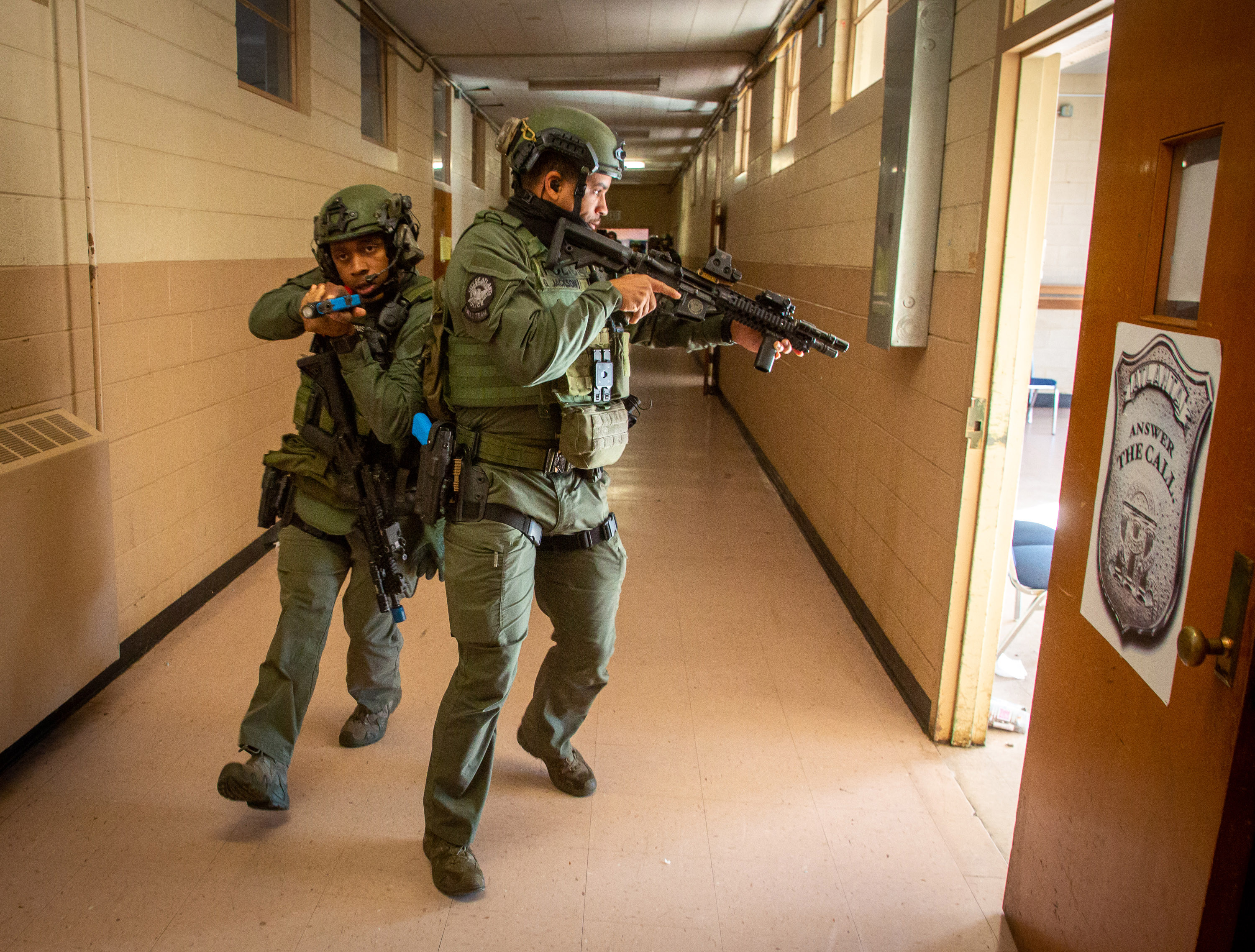Comprehensive Active Shooter Training Programs for Schools and Offices
Comprehensive Active Shooter Training Programs for Schools and Offices
Blog Article
Implementing Active Shooter Training: Best Practices for Developing a Safe and Prepared Community Setting
As areas confront the distressing reality of energetic shooter incidents, the execution of extensive training programs ends up being important. What are the vital aspects that can change a conventional training program right into a robust model for community strength?

Comprehending the Requirement for Educating
In a period noted by raising incidents of violence in public rooms, understanding the requirement for energetic shooter training has never been more vital. The occurrence of mass shootings across numerous environmentsâEUR" such as schools, workplaces, and shopping centersâEUR" underscores the necessity for people and companies to be gotten ready for such emergencies. Energetic shooter situations can unfold rapidly, leaving little time for people to react successfully. Therefore, extensive training campaigns can outfit participants with the knowledge and abilities to react decisively.
Moreover, the emotional impact of physical violence on people and neighborhoods can not be overemphasized. Training promotes a feeling of empowerment and preparedness, making it possible for people to feel more secure in their environments. It likewise promotes a culture of security, where awareness and watchfulness come to be important elements of day-to-day live. The advantages of energetic shooter training extend beyond instant reaction; they include boosting communication methods and improving general precaution within companies.
Key Parts of Effective Programs
Reliable energetic shooter training programs integrate a number of vital elements that enhance readiness and action abilities. First, extensive curriculum growth is crucial, guaranteeing that training web content is pertinent, evidence-based, and customized to the specific demands of the organization or area. This consists of recognizing the characteristics of active shooter occurrences and the mental influence on people included.
Second, practical training scenarios need to be utilized to simulate possible situations, enabling individuals to practice decision-making and action methods in a controlled setting. These drills facilitate muscle mass memory and construct self-confidence among individuals.
Third, a concentrate on communication procedures is vital. Establishing clear lines of interaction amongst law enforcement, emergency -responders, and individuals makes certain coordinated responses during a case. Regular updates and refresher course training courses help keep communication pathways clear and reliable.
Fourth, continuous examination and responses mechanisms should be integrated into the training program - active shooter training. Examining the performance of training via individual feedback and efficiency metrics permits for continual improvement
Lastly, promoting a culture of safety and security and preparedness within the community encourages vigilance and proactive measures, guaranteeing that people are not only qualified however likewise taken part in keeping a safe and secure setting.
Engaging Area Stakeholders

To successfully engage these stakeholders, it is crucial to interact the objectives and advantages of the training. Organizing informational sessions can aid clear up the training's purpose, address worries, and outline the roles each stakeholder may play. Moreover, producing a stakeholder advisory committee can promote continuous discussion, visit here enabling for varied perspectives and understandings to be integrated right into the training program.
Structure connections with area leaders and organizations is likewise crucial. Their support can enhance outreach efforts, increase participation, and make sure that training is customized to the unique requirements of the community. Additionally, stakeholders can help in sharing information and resources, reinforcing the message of security and readiness.
Inevitably, involving community stakeholders not only strengthens the training effort however likewise grows a feeling of ownership among homeowners, causing an extra resistant and enlightened area with the ability of reacting effectively to potential risks.
Training Delivery Methods
Utilizing a selection of training distribution techniques is important to fit the varied understanding designs and needs of individuals in energetic shooter training programs (active shooter training). Efficient training can take several forms, consisting of talks, hands-on simulations, online modules, and interactive workshops. Each approach offers an one-of-a-kind objective and can enhance the general learning experience

On the internet modules use flexibility and access, enabling individuals to discover at their own speed. These can consist of videos, quizzes, and conversations to gauge understanding. Interactive workshops motivate seminar and analytical, advertising teamwork and interaction skills.
Including a blended technique that combines these methods not only improves the click here for more info training experience but likewise ensures that participants are better prepared to respond successfully in case of an active shooter situation (active shooter training). By attending to numerous finding out choices, organizations can create a more educated and responsive neighborhood
Continual Evaluation and Improvement
Routine assessment and enhancement of active shooter training programs are important to preserving their significance and efficiency. As hazards progress, so have to the techniques and methodologies employed in training. Continuous assessment ensures that training content shows the most up to date intelligence on energetic shooter incidents, incorporating lessons learned from recent events and readjusting for arising patterns.
To facilitate this process, companies need to establish comments mechanisms that consist of individual examinations, specialist evaluations, and occurrence debriefs. Gathering data on individual efficiency during drills and workouts is necessary, as it highlights locations needing improvement and educates future training sessions. Additionally, involving with police and emergency situation responders can provide beneficial understandings into the usefulness and applicability of training procedures.
Regularly set up evaluations of training products and methods should be mandated, promoting an atmosphere of advancement and flexibility. Organizations should also urge a society of recurring knowing, where team members feel equipped to suggest changes based upon their experiences. By dedicating to continual assessment and improvement, organizations not just enhance the performance of their active shooter training programs however also strengthen their overall dedication to safety and readiness within the community.
Final Thought
To conclude, efficient execution of energetic shooter training requires a comprehensive technique that focuses on community interaction and realistic simulations. By establishing customized curricula, incorporating varied training approaches, and fostering cooperation among stakeholders, communities can boost readiness. Constant evaluation and responses mechanisms are important for adapting programs to arising dangers, consequently strengthening total security. Inevitably, a commitment to recurring training and enhancement site web grows a society of watchfulness and preparedness, guaranteeing a safer environment for all community members.
Report this page